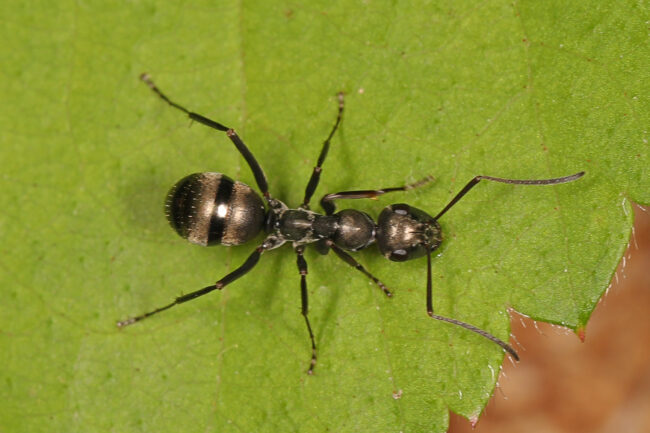Some animals can alter their diet in response to infection. This often involves compensatory feeding where an animal attempts to recover the nutrients lost during an immune response. It may also be medicinal, where animals deliberately consume food sources with compounds which help treat infection[1]. Ants have been shown to consume hydrogen peroxide, an antiseptic compound, in response to infection[2].
Aphids are small, soft-bodied insects that infest plants and feed on sap. Some aphid species, such as Megoura viciae, have shown elevated levels of hydrogen peroxide. This antiseptic chemical is produced by plants as a response to biotic and abiotic stress factors, to enhance their adaptation[3]. While ants are not known to prey on aphids in nature, they are attracted to the honeydew expelled by aphids[4]. Research by Rissanen et al. aimed to determine if fungal infection would alter the diet of silky ants, Formica fusca, and whether infected ants would prey on aphids medicinally.
The team collected silky ants from Finland and infected half with the fungus Beauveria bassiana. Three food options were provided: a standard Bhatkar diet of honey with agar, or the same mixture with either a low or high concentration of crushed aphids. In contrast to the non-infected ants which showed a marked preference for the standard food, the ants infected with fungus consumed all three food options without a significant preference. There was no difference in the mortality rates between the control and infected groups of ants, suggesting that consumption of aphids was successful in controlling the fungal infection. In fact, infected ants were balancing the consumption of aphids with the non-aphid mixture to reduce the risk of being harmed by ingesting high levels of hydrogen peroxide. In addition, consumption of the standard food provided energy for their immune response. The researchers suggest that this behaviour displays a level of diet regulation and the ability to determine concentrations of hydrogen peroxide which can treat the fungal infection while remaining tolerable to the species[5].
Recognising the adaptivity of animal diets in response to pathogen infection, particularly the self-medicating habits, is important for understanding how animals interact with their ecosystem and how they respond to different pressures to increase their chances of survival.
[1] https://royalsocietypublishing.org/doi/10.1098/
[2] https://pubmed.ncbi.nlm.nih.gov/26283006/
[3] https://www.frontiersin.org/articles/10.3389/fpls.2021.811105/full
[4] https://www.cookspest.com/learn/blog/the-relationship-between-aphids-ants-and-natural-enemies/
[5] https://royalsocietypublishing.org/doi/10.1098/
Edited by Despoina Allagioti
Copy-edited by Rachel Shannon

